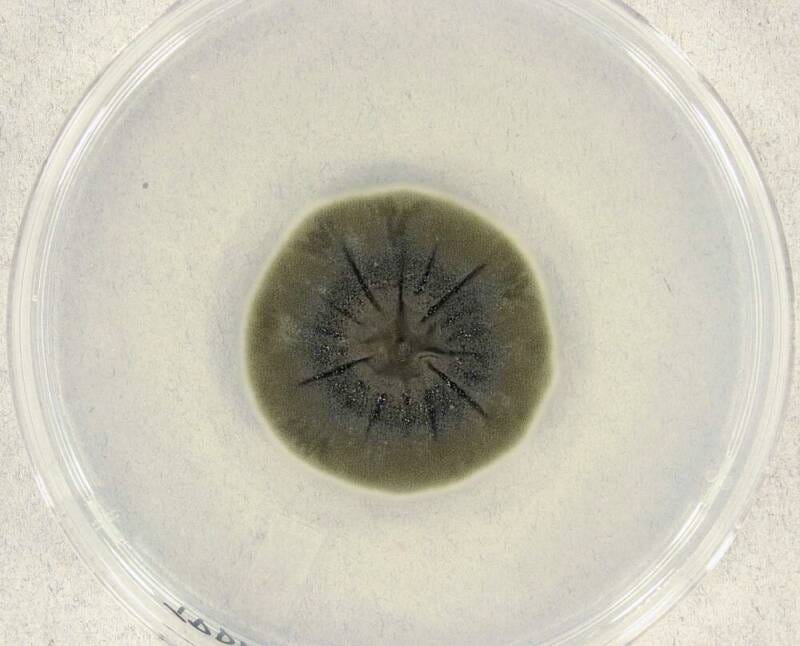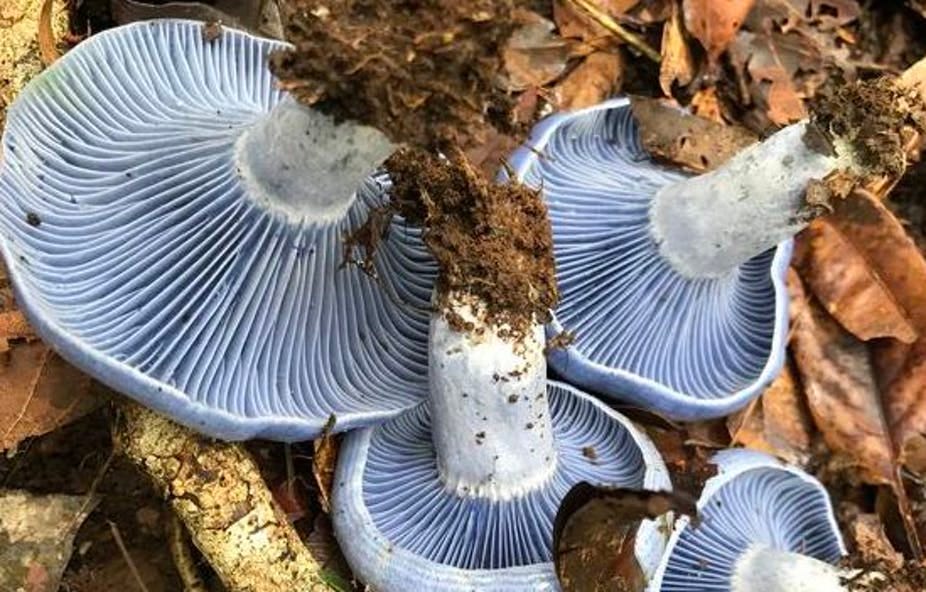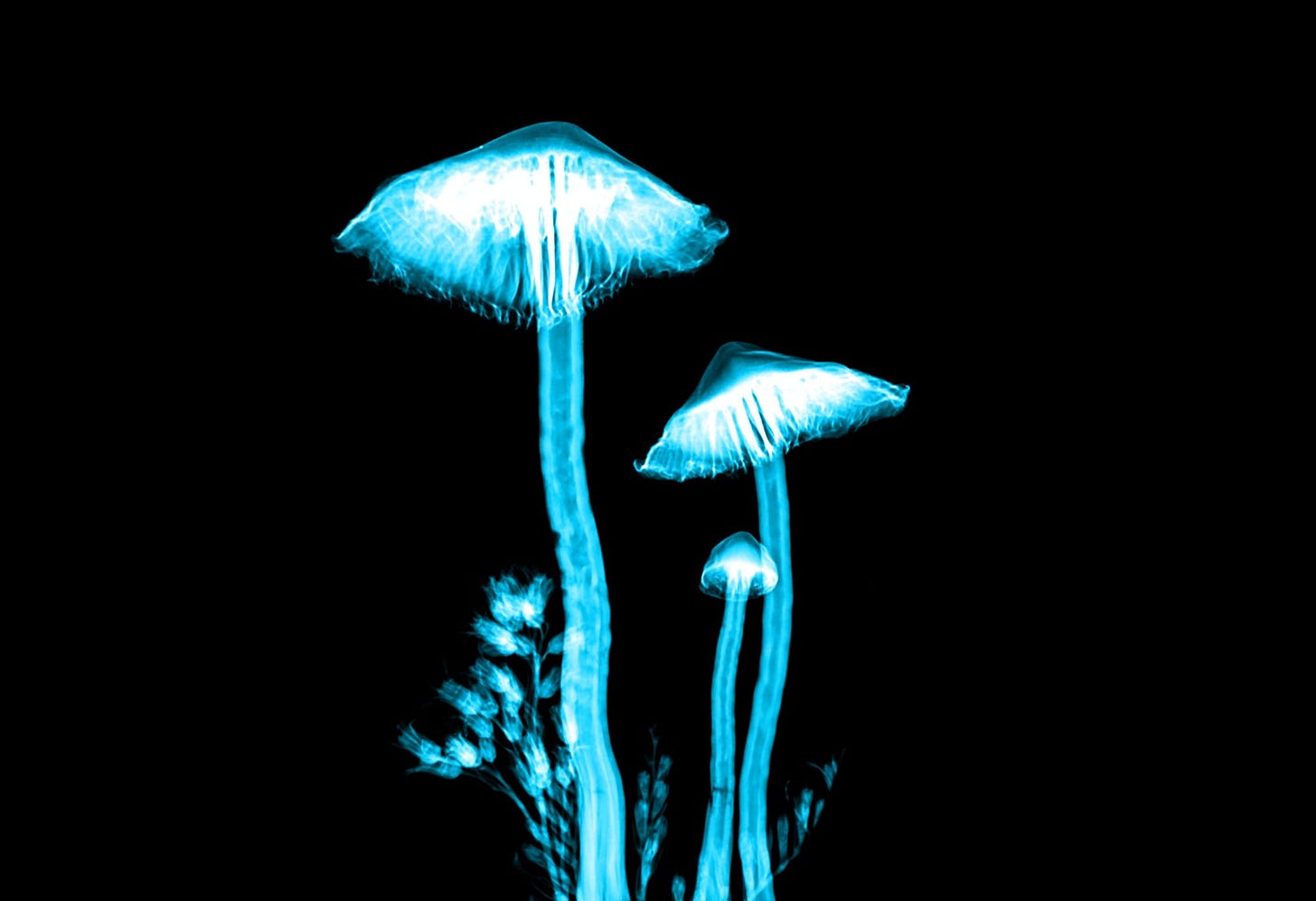Cool Shit That Exists: A Fungi That Can Eat Toxic Radiation And Clean Up Nuclear Disasters Like Chernobyl
Scientists hope to use the fungi's powers to help people who are routinely exposed to radiation like cancer patients and astronauts.
Whether it’s an asteroid or an ice age, planet Earth and its lifeforms always seem to find a way to carry on in the face of destruction and change. For instance, scientists have found fungi that are capable of thriving in the toxic environment of Chernobyl by absorbing and feeding off of the surrounding radiation.
The discovery has led scientists to believe that this extraordinary ability could be harnessed to shield human beings who are routinely exposed to dangerous amounts of radiation like cancer patients, nuclear power plant engineers, and now astronauts in space.
Indeed, according to a recent experiment, researchers believe that these fungi can be used to make shields to protect potential Mars colonizers from cosmic radiation.
The Power Of Black Fungi
The 1986 Chernobyl nuclear disaster has killed thousands over the years due to the effects of radiation poisoning. Even decades later, radiation in Chernobyl’s surrounding area lingers, but this hot spot has also become a mecca for a certain type of resilient fungus.
In 2007, scientists discovered several strains of fungi in the Chernobyl nuclear reactor that were actually feeding off of and even growing faster in the presence of gamma radiation. These organisms have since become known as “black fungi” for their high concentrations of melanin.
“The fungi collected at the accident site had more melanin than the fungi collected from outside the exclusion zone,” Kasthuri Venkateswaran, a senior researcher at NASA and the lead scientist on the agency’s space fungi project, toldVice. “This means the fungi have adapted to the radiation activity and as many as twenty percent were found to be radiotrophic—meaning they grew towards the radiation; they loved it.”
Because the fungi contain so much melanin, they are able to feed off of the gamma rays and convert them into chemical energy, kind of like a darker version of photosynthesis. This process is called radio-synthesis
Harnessing The Fungi’s Defenses Against Radiation
Some applications of this fungus could include: protecting cancer patients undergoing radiation therapy, creating safer environments for those working in nuclear power plants, and potentially helping us to avoid the next nuclear-related catastrophe. Scientists also hope that the fungi could be used to develop a biological source of energy via radiation conversion.
And while these things are certainly cool, it get’s even weirded... Scientists wonder if the process of radio-synthesis performed by the melanin cells in the fungi could be applied to the melanin in human skin cells, making our skin cells able to turn radiation into “food” too. For now, most experts believe this is a stretch — but they are not ruling this possibility out for other lifeforms.
Most recently, scientists have as wondered whether the fungi could help protect astronauts against cosmic radiation during prolonged space travel. In 2016, SpaceX and NASA sent several strains of black fungi from Chernobyl to the International Space Station. The shipment also included more than 250 different tests for the space crew to carry out.
The molecular changes that researchers observed in the Chernobyl fungi were brought on by the stress created from exposure to the site’s radiation. Researchers hoped to replicate this reaction in space, where they planned to expose the fungi to the stresses of microgravity and compare them with similar strains of fungi from Earth.
The results of the NASA study could have great benefits for the future of space travel, and possibly even protect astronauts in deep space or potential colonizers on Mars.
How a humble mushroom could save forests and fight climate change
The conversion of forests to agricultural land is happening at a mind-boggling speed. Between 2015 and 2020, the rate of deforestation was estimated at around 10 million hectares every year.
Compared to 2012, the UN’s Food and Agriculture Organisation(FAO) is predicting a massive increase in agricultural demand of 50% by 2050. In South America, around 71% of rainforest has been replaced by pasture and a further 14% has been lost to the production of animal feed. One of the key successes of COP26 was a pledge from world leaders to end deforestation by 2030.
So what can we do? Well, we know that different foods have different footprints. So what if, instead of having farming and forestry in direct conflict, we could develop a system that allows food production and forest on the same parcel of land?
Miraculous mushrooms
This is exactly what our latest research focuses on, looking at fungi that grow in partnership with trees, in a mutually beneficial arrangement. This is a common association and some species can produce large mushroom fruiting bodies, such as the highly prized truffle. Aside from this delicacy, cultivation of these species is a new and emerging field. But progress is especially being made in one group known as milk caps, that include a beautiful and unusually bright blue species.
High in dietary fiber and essential fatty acids, this edible mushroom’s blue pigmentation means they are easy to identify safely. With extracts demonstrating antibacterial properties and an ability to kill cancer cells, the blue milk cap could also be a source of pharmacological potential.
With all the benefits forests bring and without the environmental burdens of intensive farming such as fertilizer, water use or the growing of additional feed. Beef farming contributes to climate change by emitting greenhouse gases, but as these fungus-inoculated trees grow, they draw down carbon from the atmosphere, helping in our fight against the climate crisis. So, as well as producing more food, the process can also enhance biodiversity, aid conservation, act as a carbon sink for greenhouses gases and help stimulate economic development in rural areas.
But this is a new technology and like all new innovations, support is needed. This means further research and proper financial investment to develop the technology to a point where agribusinesses feel confident to invest at scale.
Why Psychedelic Compounds Are the Next Big Thing in the Mental Health Treatment Market
If you’ve been paying attention, over the past few years you’ve probably noticed how cannabis has been blazing a trail in its resurgence into the accepted culture, but what you may not know is that riding it’s coattails include quite a few psychedelic substances as well.
With a projected market valuation of over $10 billion by 2027, psychedelic drugs are becoming increasingly populate as an area of research and drug development. And while most of the medical community has accepted that cannabis and psychedelics can potentially provide major positive treatment options when it comes to a whole slew of medical problems, there is still plenty of research to be done.
Psychedelics, also known as hallucinogens, include a range of compounds that can induce hallucinations if administered in sufficient quantities. The most commonly used psychedelic substances include ketamine, Psilocybin, Ibogaine, LSD, DMT and MDMA.
In the past, these drugs have been evaluated for treatment for a range of serious neuropsychiatric and neurodegenerative disorders, including major depressive disorder, bipolar and anxiety disorders such as PTSD, as well as Alzheimer’s and Parkinson’s disease. The prevalence of these conditions is growing, as is the population of patients who have developed a tolerance to currently available treatments. And so, novel drugs that are based on natural substances such as psychedelics are becoming more widely studied, to provide a possible solution for such conditions of the mind.
While the traditional drugs that are currently used to treat major depressive disorder have serious side effects, such as obesity, lack of sexual desire and anxiety, thus far researchers do not believe that the new, novel approaches to treating mental conditions by leveraging the natural healing powers of psychedelic substances have the same downsides. In fact, combining psychedelics with well-known, popular, and proven antidepressant drugs, may result in much better therapy outcomes for patients as they will induce fewer side effects while working at a higher efficacy. They will therefore also result in better patient compliance.
Mental illness is among the costliest medical expenses in the U.S., and it has a high cost to employers in lost productivity. The number of people suffering from mental illness, plus the cost of drugs which is already in the tens of billions of dollars annually, are projected to grow in the years ahead– especially since COVID-19 has exacerbated mental health issues globally.
According to the mental health charity Mind, more than two-thirds of adults with mental health problems reported that their mental health worsened during the various lockdowns. What’s more, is that we still don’t have a full picture of how the pandemic and its accompanying lockdowns, have impacted and affected the general population’s mental health. In response, pharmaceutical companies are looking to significantly invest in new medical treatments to address said problems. Governments have also been encouraged to act swiftly to protect the welfare of their citizens.
Psilocybin is a realistic and proven alternative to traditional antidepressants. In the first direct head-to-head trial comparing psilocybin with traditional antidepressants, psilocybin was found to be as effective as the leading SSRI, with significantly lower rates of relapse post-treatment. With this in mind, it’s only a matter of time before big pharmaceutical companies begin to incorporate psychedelics into their offerings.
As psychedelics begin to break into the mainstream, we can look to the emergence and growth of the cannabis industry as a glimpse of what is to be expected from the psychedelic medicine industry. As legislation, public opinion, and early investment move in an encouraging direction, it seems that lightning could strike twice for those brave investors who are once again willing to invest in this emerging field.
Thank you for reading this weeks edition of Fungi Friday’s! If you enjoyed what you found, please feel free to forward to friends also interested in the Fungi Community!
Connect with me on Twitter @BowTiedMushroom
And if you were forwarded this post and enjoyed what you found, please subscribe below:




